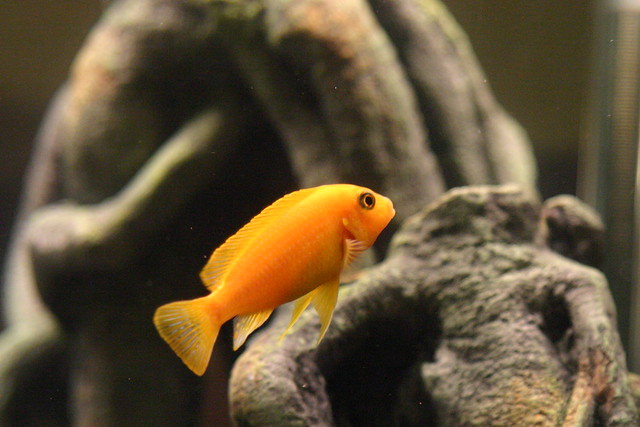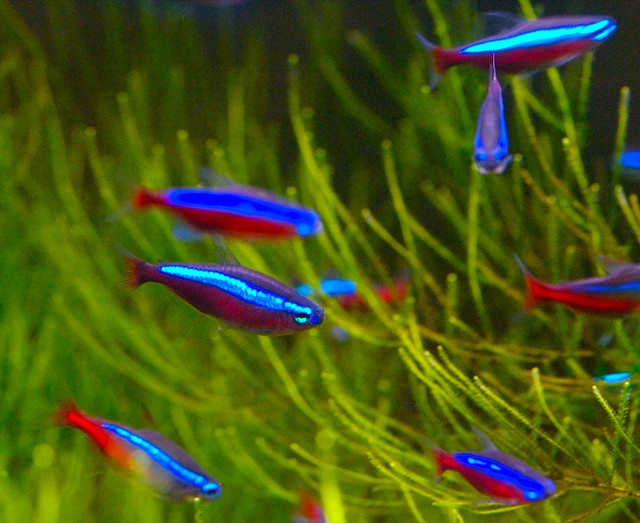 |
| Photo by J Wynia |
This variety used to be under the genus name of Pseudotropheus but this name is now presently pointing to another species. The genus name up to now is still being disputed some consider Maylandia while other used the name Metriaclima.
The female zebra cichlid can grow as much as 10 centimeters of four inches in length while the male zebra may grow up to 12.7 centimeters or five inches long.
The "red" name of this fish is actually solid orange in color but the males sometimes possess reddish stripes.
This variety may thrive in water chemistry with a pH level of 7.5 to 8.5 and a temperature of 24 to 28 degrees Celsius or 75 to 82 degrees Fahrenheit. When kept in an aquarium it must be placed with other species of the same temperament. The appropriate ratio would be one female to three or four females in a tank. Overcrowding the tank may help suppress the aggression of a red zebra cichlid. Decorate tank densely with rocks or cave that may be used as their hiding place. Use also fine gravel for substrate or fine gravel with crushed coral, or driftwoods, Java ferns, or Java moss. Ensure to provide one hiding place each species and a capacious area for the cichlids to swim freely. Avoid using rooted plants for this will reduce the pH level of the water.
When it comes to breeding the female zebra is known to be mouth-brooders. The female will brood her eggs approximately in three weeks and cares will still continue to care for the fry for another week after she has released them in the open. You can identify a cichlid that she is breeding when her mouth enlarged and most clearly when she refuses to eat.
Feeding the fry in any fish food is fine but vegetable is best as its staple diet. To make them more productive in breeding the best thing to do is to isolate the red cichlid. But the more rational way of isolating her should be kept in a lesser period to avoid the female losing her social status with the rest of her tank mates. This is done to prevent fights when the breeding mother is returned to its original tank. Bear in mind that stress may lead the mother to eat their eggs and fry.
Red zebra cichlid is omnivores and enjoys food such as spinach, peas, zucchini, and lettuce. They also love live foods like crickets, brine shrimp, mealworms, glass worms, and tubifex worms and many more.







